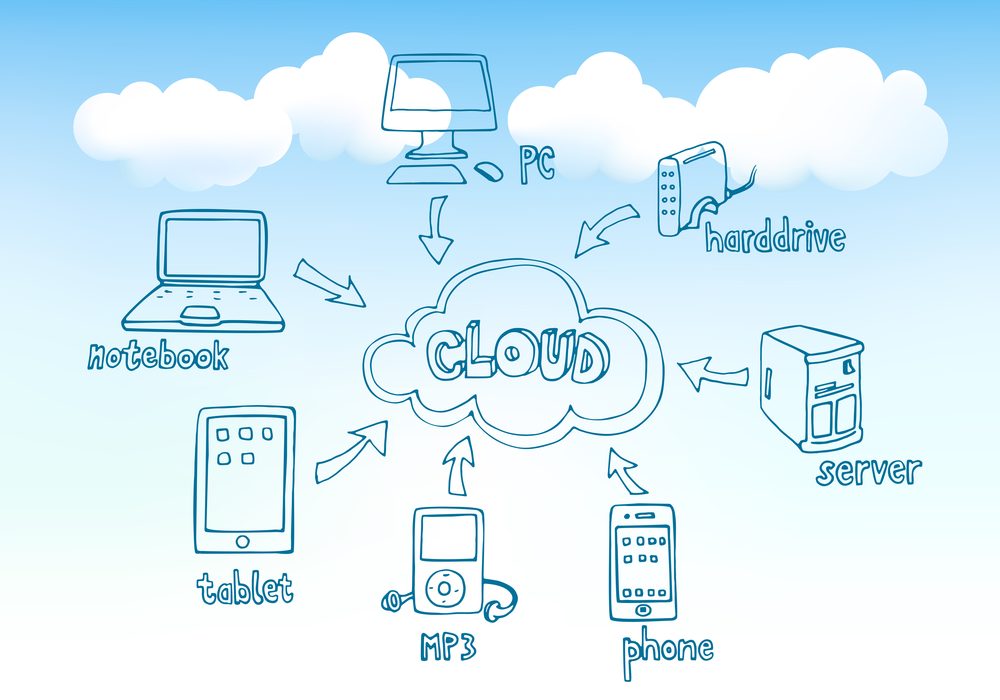Cloud Computing Platforms are growing fast. But if you look at the numbers a bit closer, you will realize that the industry is barely scratching the surface of its potential.
The Global Cloud Infrastructure market is expected to hit $39.5 billion in 2019, up from $31 billion in 2018. The 27% growth rate is huge, but at $40 billion, the IAAS segment accounts for a very small portion of the $3.9 trillion Global IT spending.

This very clearly shows that enterprises around the world are yet to completely accept cloud computing. What is holding them back? Why Public Cloud will only be as big as traditional
Here is a list of reasons
Cloud Computing: The Challenge
Vendor Lock-in, Switching Cost & Complexity
Aside from security, this is, by far, the biggest fear that companies have when it comes to
-
What if I develop everything for the platform and then the cloud service provider starts increasing costs?
-
What if a competing cloud provider becomes ten times better than the service provider I have chosen?
-
Will I be able to quickly move all my data and applications to another vendor for any reason?
Big companies operate in petabytes. Migration has to be carefully planned, and implementation is never easy. In fact, it might take months, if not weeks. And let’s not forget the cost of switching from one provider to another.
This is a problem that the industry as a whole needs to address if they want widespread adoption, and that means a lot of responsibility lies on the shoulders of Amazon Web Services, Microsoft, Google and IBM who are leading the race.
Fear of Outages
This is a real problem, but to put the onus of that on cloud service providers alone is not going to resolve anything. If there’s one thing that’s guaranteed in technology, it is that things fail all the time. There is no guarantee that your own datacenter will never go down, or one of your employees won’t break something with a simple typo. Just because you handle all your infrastructure, does not mean that your have fool-proofed yourself from outages.
The challenge for public cloud vendors is that their clients tend to have somewhat unrealistic expectations around outages, more so because there’s a sacred “service level agreement” in place. But even a 99.9 percent uptime commitment, if honored, means 8.76 hours of downtime – a third of one whole day – over a full calendar year. For certain types of applications, that can be disastrous, to say the least.
The Amazon outage in early 2017 was so massive that it literally took down the Internet along with it, and it took several hours before things got back to a normal state – but it was only about four hours, and just look at the havoc it wreaked.
In September 2018, a lightning strike closer Azure’s datacenter in South Central US region caused a massive outage rendering several services unavailable to users.
If you’re running a consumer-facing application, you just cannot afford to have such outages. Though it can happen to anyone, the fear that third-party infrastructure service can go down does keep companies away from fully embracing
Migration Challenges
Migration remains a big hurdle for companies that are considering public cloud. Once again, the larger your database, the larger the problem is. If you have a live application with millions of customers, it will be a daunting task to migrate from your existing infrastructure to public cloud. You will have to plan every single detail, organise your resources and then hope that the actual execution part goes your way.
If you have been in IT for any amount of time, you would obviously know that there is always scope for things to go wrong. In fact, we can say with 100% certainty that no matter how much you plot and plan, something invariably goes wrong at some point during the operation. And CTOs who know this will always be wary of taking unwanted trouble on their heads.
On the positive side, however, it is most definitely possible. Evernote, the cross-platform workplace app, moved to Google Cloud Platform recently. It took them 70 days to move 3PB of data into Google Cloud. Evernote said that it started off small, by transporting a few items at a time, and then accelerated once they were 100% confident. It’s not impossible, but it is a difficult task to achieve, no doubt.
Public Cloud Cost Component
Amazon, Microsoft and Google Cloud are slashing cloud service prices on a regular basis. During a recent analysis, we found that Amazon (AWS) – between October 2008 and November 2016 – cut its S3 pricing from $0.15/GB to $ 0.026/GB, an 82.67% cut. As of January 22, 2019, the first 50TB S3 standard storage costs only $0.023 per GB.
Last year Microsoft dropped the price of Azure standard to $100 per month, a $200 price reduction. Google Cloud Platform’s stated philosophy is: “Affordable on-demand prices and a commitment to Moore’s Law.”
Though all the cloud service providers are aggressively cutting costs, they have a great distance to cover before getting cloud prices to a level where it makes no economic sense to continue with the on-premise model.
See what Google Cloud Platform says on its webpage:
“Talking to our customers, we have heard several clear messages. First, Cloud pricing is too high to be a long-term replacement for the premise-based model. Prices need to come down — not just initially but over time.” – GCP
Bank of America CTO David Reilly told Brandon Butler, Senior Editor of Network World:
“When we benchmark the price points in the public cloud against what we’re able to provide internally – and we have years of benchmarking under our belt now – the economic delta’s just not there yet,” he says. “There’s no economic reason for us to move to the public cloud.”
The point at which even hybrid cloud doesn’t make economic sense is still a long way off, which is why larger companies prefer their own private cloud or take the hybrid route.
Existing Infrastructure and Investments in IT
Though we don’t hear much about this as a hurdle to public cloud, it’s a very real one – and one that heavily influences the decision-making process.
“In 2016, cloud computing options accounted for 8.5% of global enterprise IT spending. In 2017, cloud computing captured 11.3% of
As you can see, although Cloud IT spending has been growing, it has not yet grown to even half of worldwide IT infrastructure spending. The bulk of spending is still going towards traditional infrastructure.
With so much money still going towards building their own infrastructure, it will be extremely difficult for companies to make a complete move to public cloud because it essentially makes their existing investments redundant. And that’s not something that’ll go down well with stakeholders, unless public cloud pricing reaches that tipping point where being on the cloud starts to pay for itself and then some.
Lack of Talent
Find a good IT resource is difficult, and if you are looking for talent to work on new technologies, things are going to be even more difficult. Cloud is growing, but for companies to find talent that can address their requirements after moving to public cloud is not an easy job.
Multi-cloud is Easy to Talk About but Hard to Implement
The 2017 Amazon outage took down the Internet with it because so many big applications were hosted in the AWS US-EAST-1 region that was affected. But it also made it glaringly obvious that some of the big companies had no backup plan, and no ability to quickly reroute traffic when a region failed.
Problems such as Vendor lock-in and outages can be easily addressed with a multi-cloud approach, where your application is hosted on at least two platforms (for example, Amazon Web Services and Microsoft Azure), but it’s easier said than done.
Even finding the right talent to manage your cloud operations is difficult, but to find talent that can simultaneously develop and manage multiple platforms and frameworks is extremely challenging.
Multi-cloud needs a ground-up approach, and companies need to do a lot of work to implement and keep working on it to stay the course. In turn, this will actually increase the overall cost of the company’s public cloud expenditure.
Compliance and Regulatory Concerns
For a lot of industry segments such as banking and financial services, data sovereignty is an important issue. These companies will always want to stay in control of their data, and need to know exactly where the data is stored. As privacy laws around the world get stronger and tighter, a lot of countries are mandating that companies keep customer data within their borders.
Big banks have, so far, sat on the cloud sidelines because of this issue, but the rate at which big cloud service providers are building datacenters around the world, the data sovereignty issue is on the way to vanishing from the problems list for cloud.
Compliance and regulatory issues will remain, and so will security, and the onus will be on cloud service providers to address those concerns and enable these industry segments to embrace the cloud.
Security Angst
This is one headache that will never go away. Security is always an issue whether you are on the cloud or not. Data theft and breaches are common occurrences in today’s world, and will remain so even 100 years from now. Amazon, Microsoft, Google and IBM constantly work on improving security features that they can offer for their cloud services, but will it be enough? Never, we say.



